HTML
--> --> -->The crucial energy range extends from a few tens of keV to
$\begin{aligned}[b]^{12}{\rm{C}}{{\rm{ + }}^{{\rm{12}}}}{\rm{C}}&{ \to ^{{\rm{20}}}}{\rm{Ne + }}\alpha {\rm{ + 4}}.{\rm{62 \;MeV}}{ \to ^{{\rm{23}}}}{\rm{Na + {\rm{p}} + 2}}.{\rm{24 \;MeV}}\\&{ \to ^{{\rm{23}}}}{\rm{Mg + {\rm{n}} - 2}}.{\rm{60 \;MeV}}{ \to ^{{\rm{16}}}}{\rm{O}}{{\rm{ + }}^{\rm{8}}}{\rm{Be - 0}}.{\rm{20\; MeV}}\\&{ \to ^{{\rm{24}}}}{\rm{Mg + 14}}.{\rm{934 \;MeV.}}\end{aligned}$  |
 Figure1. Energy-level diagram for the 12C+12C system with primary exit channels at low energies. p
Figure1. Energy-level diagram for the 12C+12C system with primary exit channels at low energies. p12C(12C,
| Measurement |   | Beam/pμA | Target | Technique | Detection of partial   | method to calculate total   |
| Patterson [6] | 3.23 – 8.75 | 0.017–0.17 | Carbon foil with thickness of about 40 μg/cm2. | Particle spectroscopy. Protons and       | Total cross sections:       |                         |
| Mazarakis and Stephens [9] | 2.55 – 5.01 |   | Self-supporting foils from high-purity graphite, 30, 53, and 65 μg/cm2. | Particle spectroscopy. Surface barrier Si detectors at eight angles between 20° and 90°. | Cross sections of                                     |         |
| Becker [10] | 2.8 – 6.3 | 1–5 | Self-supporting foils from graphite, 8 to 30 μg/cm2. | Particle spectroscopy. Nine surface barrier Si detectors at 10° to 90° (in 10° steps). | Cross sections of                                                             |         the missing channels with the extrapolation of the averaged S* factor at higher energies |
| Zickefoose [13] | 2.0 – 4.0 |   | Thick target: high-purity graphite; HOPG. | Particle spectroscopy. Two     | The       | No total cross sections were given. |
| Kettner [14] | 2.45 – 6.15 |   | Carbon targets (9 to 55 μg/cm2) were evaporated on 0.3 mm thick Ta backings. |   |   | |
| Dasmahapatra [20] | 4.2 – 7.0 |   | Carbon foil with thickness of about 30 μg/cm2. |     | Total-  | To obtain total cross sections, the fraction     |
| Aguilera [15] | 4.42 – 6.48 | Amorphous C-foil deposited onto thick Ta backing. Thickness: 19.2      |   |   | The                 | |
| Spillane [16] | 2.10 – 4.75 |   | Thick target: high-purity graphite. |             | The   |         |
| Jiang [17] | 2.68 – 4.93 |   | Isotopically enriched (99.9%) 12C targets with thickness of approximately 30-50 μg/cm2. | Particle-            |                   and incomplete   | Normalized by ratios         |
| Fruet [18] | 2.16, 2.54–3.77, 4.75–5.35 |   | Carbon foil using rotating target mechanism, with thickness of approximately 20-70 μg/cm2. | Particle-    |     | Normalized by ratios             |
| Tan [19] | 2.2, 2.65–3.0, 4.1– 5.0 |   | Thick target: HOPG. | Particle-        |     | Normalized by ratios         |
Table1.Summary of experimental measurements of
In the particle detection experiment, the protons and
The detection of characteristic
Unlike the particle detection experiment, the
The probability of decay through the 12C(12C,n)23Mg channel is lower than that through the p and
The 12C(12C,8Be)16O (or 12C(12C,2
We convert the cross sections of 12C(12C,
$ S^*(E_{\rm cm}) = \sigma(E_{\rm cm}) E_{\rm cm} {\rm exp}( \frac{87.21}{\sqrt{E_{\rm cm}}}+0.46 E_{\rm cm}), $  | (1) |
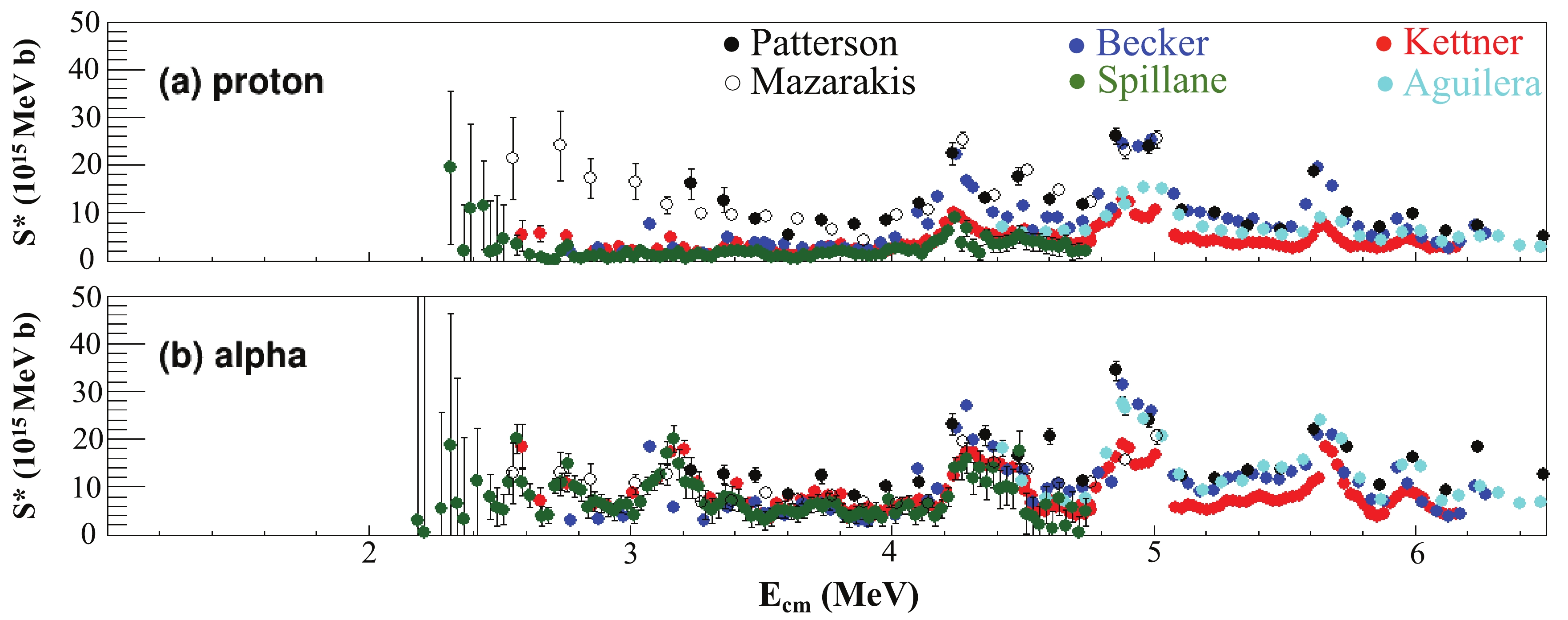 Figure2. (color online ) S* factor of measured cross sections for the p and
Figure2. (color online ) S* factor of measured cross sections for the p and  Figure3. (color online) Ratios of various data sets as shown in Fig. 2 to the baseline data set, representing the measurement by Kettner et al. The means and errors of the baseline data sets are interpolated in the calculations of ratios. The shaded areas shown in the ratio plots correspond to a deviation of ±30%.
Figure3. (color online) Ratios of various data sets as shown in Fig. 2 to the baseline data set, representing the measurement by Kettner et al. The means and errors of the baseline data sets are interpolated in the calculations of ratios. The shaded areas shown in the ratio plots correspond to a deviation of ±30%.Differences exist also among the S* factors obtained using the same experimental techniques. Taking particle spectroscopy data as an example, the summed S* factors of the proton channel of Becker et al., Patterson et al., and Mazarakis et al. are in agreement within ±20% for
Measures have been taken in some experiments to account for the missing channels to obtain the actual total S* factor. For example, Becker et al. summed all the observed particle channels to obtain the total fusion cross sections. In cases where the data for a given particle group were only available over a limited energy range, the energy-averaged S* factors of these groups were extrapolated down to the threshold and added to the total S* factors. Based on the result of Becker et al., Spillane et al. estimated the mean values of the ratios of the 440 keV line to the sum of all the proton channels and the 1634 keV line to the sum of all the alpha channels to be 0.55 ± 0.05 and 0.48 ± 0.05, respectively. This correction is included in their reported S* factors of the proton and alpha channels. Aguilera et al. took a different approach by adding the S* factors of the
In this paper, we introduce a novel approach based on the statistical model to predict the branching ratio of each decay channel. The prediction is validated by the experimental data obtained by particle spectroscopy. The branching ratios are predicted for each experiment and used to convert the observed S* factors into the total S* factor of 12C+12C.
 Figure4. (color online) Spin populations of the 24Mg compound nucleus produced by 12C+12C fusion, calculated with CCFull code [27]. Dominant components have spins
Figure4. (color online) Spin populations of the 24Mg compound nucleus produced by 12C+12C fusion, calculated with CCFull code [27]. Dominant components have spins The fusion evaporation cross sections for different decay channels are modeled with the Hauser-Feshbach formula [28, 29]. Let all quantum numbers that specify the entrance and exit channels be denoted by
$ \sigma_{\alpha\alpha'} = \pi\lambda\bar{\; \; }_\alpha^2\sum_J\frac{2J+1}{(2I+1)(2i+1)}\frac{[\Sigma_{Sl}T_l(\alpha)]^J[\Sigma_{S'l'}T_l(\alpha')]^J}{[\Sigma_{a'',S''l''}T_{l''}(\alpha'')]^J} $  | (2) |
The decay of the carbon-fusion-made 24Mg compound nucleus with a given spin (0, 2, 4, or 6) is calculated using the statistical model code, Talys [31]. The numbers of experimentally known states considered in the present calculation are 50 for 23Na, 13 for 20Ne, and 20 for 23Mg. The default level density and global optical model are used above the limit of the experimentally known states. After being weighted by the predicted spin population of the 24Mg compound nucleus shown in Fig. 4, the branching ratios of each
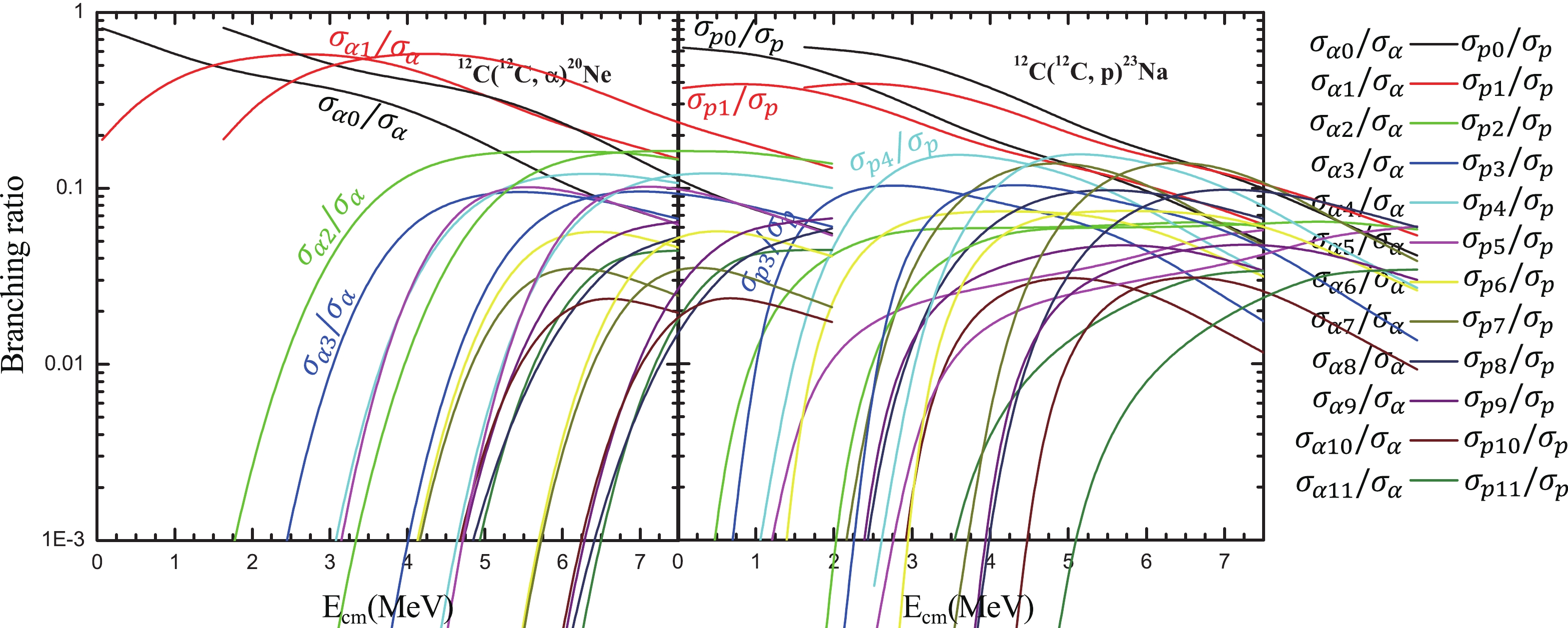 Figure5. (color online) Branching ratios, calculated using Talys [31], for each state (
Figure5. (color online) Branching ratios, calculated using Talys [31], for each state (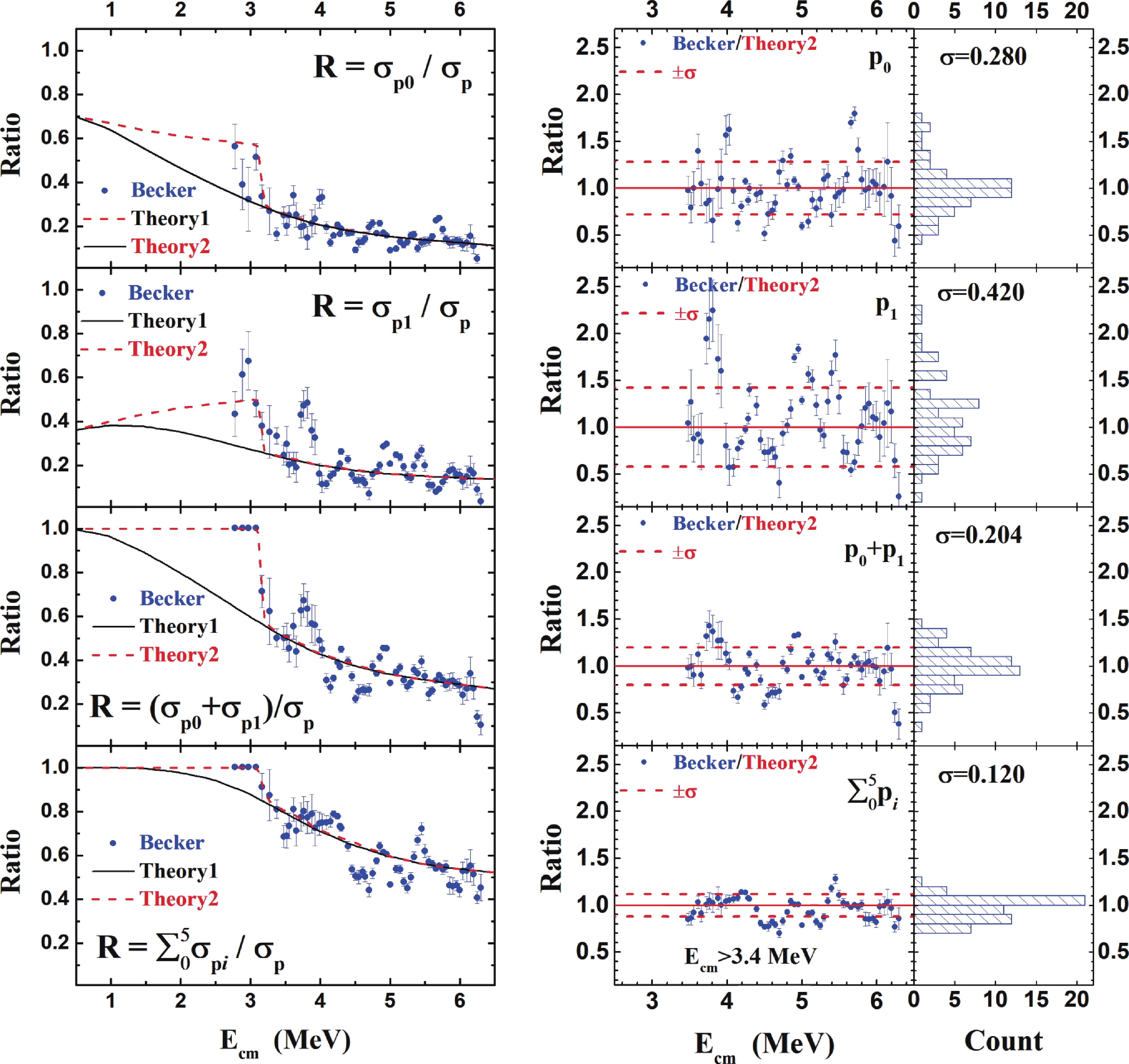 Figure6. (color online) Comparison of theoretical branching ratios with those of experimental data [10] for the p-channel. (left) The calculated
Figure6. (color online) Comparison of theoretical branching ratios with those of experimental data [10] for the p-channel. (left) The calculated 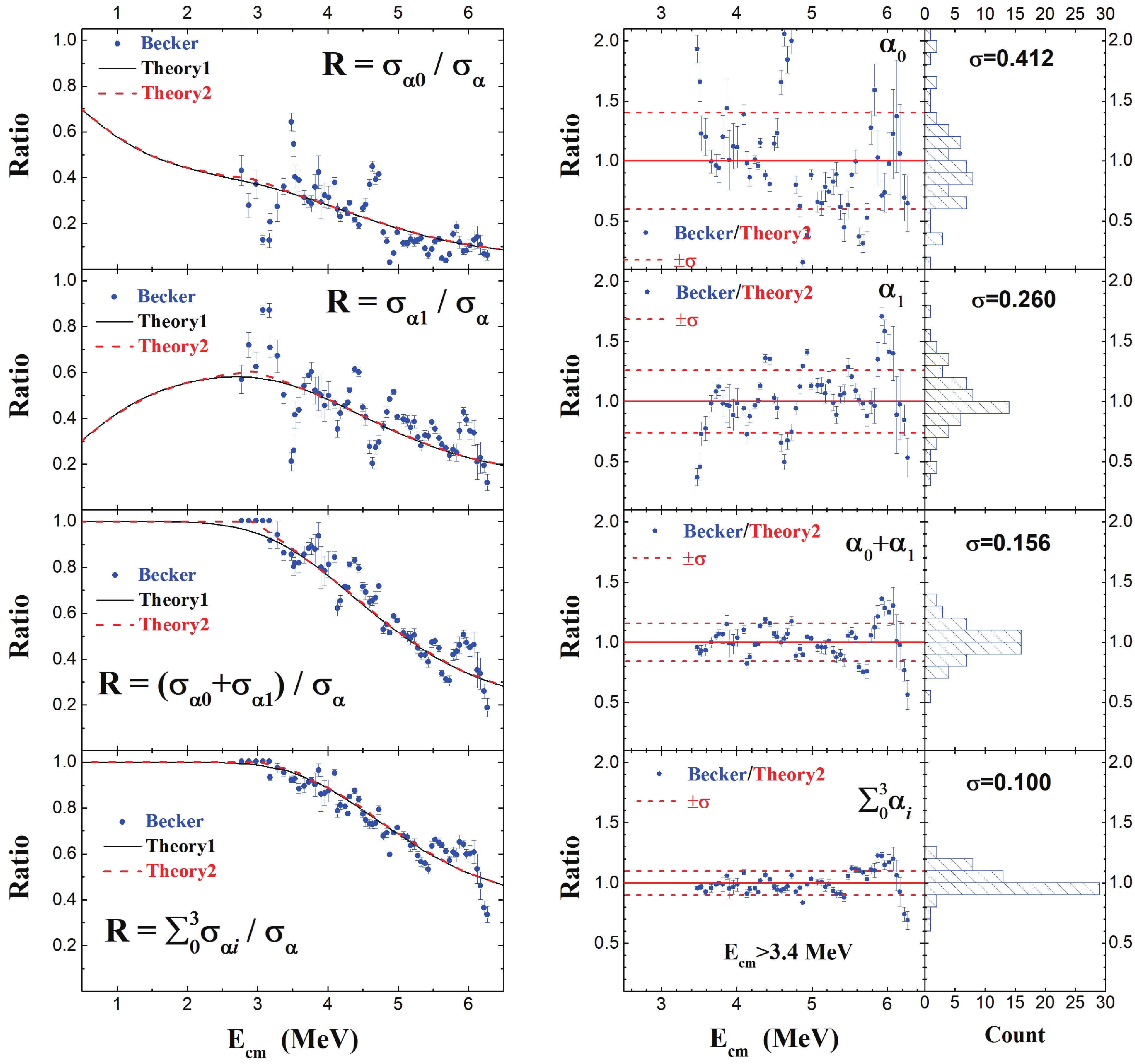 Figure7. (color online) Comparison of theoretical branching ratios with those of experimental data [10] for the
Figure7. (color online) Comparison of theoretical branching ratios with those of experimental data [10] for the The present calculations (Theory 1 and Theory 2) describe a smoothly averaged trend for the experimental branching ratios obtained from Becker's data [10]. The contribution of the ground state is approximately 40% for
To compare trends of the branching ratios obtained from the particle spectroscopy measurement with the theoretical prediction, the values of Becker/Theory2 are calculated by dividing the experimental ratios by the theoretical predictions and displayed on the right side of Fig. 6 and Fig. 7. Each theoretical ratio has been tuned using a renormalization factor, f, to achieve the best fit. For cases where the numerator in the ratio is also part of the denominator, such as
The statistical distribution of Becker/Theory2 for each branching ratio is analyzed in the energy range above 3.4 MeV to avoid the influence of missing channels. The distribution widths, which represent the fluctuation of the experimental values around the predictions, are summarized in Table 2. The distribution widths of the Becker/Theory2 ratios are approximately 30% (1
| Ratio | Value at 4 MeV | Relative fluctuation (1  |
    | 0.21 | 28% |
    | 0.21 | 42% |
(      | 0.42 | 20% |
    | 0.71 | 12% |
    | 0.48 | 14% |
[    | 0.69 | 8% |
  | 0.93 | 3% |
    | 0.24 | 41% |
    | 0.5 | 26% |
(      | 0.74 | 16% |
    | 0.89 | 10% |
    | 0.67 | 16% |
[    | 0.94 | 7% |
Table2.Theoretical branching ratios at 4 MeV and their relative fluctuations in the range of 3.4 to 6 MeV.
It has been reported in 12C(13C,p)24Na that the average branching ratio is approximately 0.25 with a relative fluctuation of 14% (1
$ \sigma_\gamma = \sum_i f_i\sigma_i, $  | (3) |
  |   |   | |
  | 100 | ||
  | 100 | ||
  | 99.4 | 0.6 | |
  | 6.47 | 0.002 | 0.53 |
  | 76.6 | 0.07 | 0.13 |
  |   |   |   |
Table3.Numerical factors (%) for yields of characteristic
  |   |   |   |   |   | |
  | 100 | |||||
  | 91.8 | 8.2 | ||||
  | 34.3 | 65.7 | ||||
  | 100 | |||||
  | 97.1 | 2.9 | ||||
  | 41.2 | 0.2 | 58.6 | |||
  | 79.4 | 0.9 | 19.5 | 0.3 | ||
  | 66.4 | 5.0 | 0.004 | 4.5 | 1.2 | 22.9 |
  | 17.7 | 0.7 | 0.7 | 1.35 | ||
  | 2.8 | 0.7 | ||||
  | 97.4 | 2.6 | ||||
  | 80.9 | 1.8 | 0.01 | 4.2 | ||
  | 96.0 | 4.0 | ||||
  | 29.1 | |||||
  | 43.1 | 0.08 | 4.5 | 0.02 | 0.3 | |
  | 67.1 | 32.9 | ||||
  |   |   |   |   |   |   |
Table4.Numerical factors (%) for yields of characteristic
The theoretical branching ratios of
  |     |     |     |     |     |
| 0.5 | 0.6986 | 0.3432 | 0.6798 | 0.3260 | 0.0063 |
| 0.6 | 0.6868 | 0.3518 | 0.6570 | 0.3490 | 0.0112 |
| 0.8 | 0.6638 | 0.3683 | 0.6104 | 0.3960 | 0.0201 |
| 1 | 0.6378 | 0.3847 | 0.5665 | 0.4400 | 0.0288 |
| 1.2 | 0.6025 | 0.3988 | 0.5336 | 0.4731 | 0.0392 |
| 1.4 | 0.5673 | 0.4125 | 0.5016 | 0.5051 | 0.0489 |
| 1.5 | 0.5494 | 0.4181 | 0.4879 | 0.5187 | 0.0536 |
| 1.6 | 0.5322 | 0.4214 | 0.4777 | 0.5290 | 0.0587 |
| 1.8 | 0.4977 | 0.4277 | 0.4572 | 0.5494 | 0.0687 |
| 2 | 0.4640 | 0.4323 | 0.4383 | 0.5683 | 0.0786 |
| 2.2 | 0.4321 | 0.4336 | 0.4234 | 0.5831 | 0.0890 |
| 2.4 | 0.4005 | 0.4344 | 0.4091 | 0.5973 | 0.0996 |
| 2.5 | 0.3851 | 0.4357 | 0.4022 | 0.6040 | 0.1051 |
| 2.6 | 0.3700 | 0.4374 | 0.3953 | 0.6108 | 0.1108 |
| 2.8 | 0.3408 | 0.4400 | 0.3814 | 0.6242 | 0.1224 |
| 3 | 0.3120 | 0.4452 | 0.3672 | 0.6370 | 0.1338 |
| 3.2 | 0.2867 | 0.4523 | 0.3522 | 0.6482 | 0.1455 |
| 3.4 | 0.2613 | 0.4593 | 0.3369 | 0.6597 | 0.1567 |
| 3.5 | 0.2508 | 0.4630 | 0.3289 | 0.6626 | 0.1624 |
| 3.6 | 0.2412 | 0.4670 | 0.3198 | 0.6642 | 0.1676 |
| 3.8 | 0.2219 | 0.4750 | 0.3015 | 0.6678 | 0.1780 |
| 4 | 0.2048 | 0.4826 | 0.2832 | 0.6664 | 0.1877 |
| 4.2 | 0.1922 | 0.4870 | 0.2621 | 0.6570 | 0.1968 |
| 4.4 | 0.1793 | 0.4927 | 0.2420 | 0.6465 | 0.2049 |
| 4.5 | 0.1743 | 0.4937 | 0.2310 | 0.6397 | 0.2089 |
| 4.6 | 0.1696 | 0.4940 | 0.2208 | 0.6308 | 0.2127 |
| 4.8 | 0.1608 | 0.4958 | 0.2003 | 0.6136 | 0.2194 |
| 5 | 0.1527 | 0.4962 | 0.1810 | 0.5952 | 0.2267 |
| 5.2 | 0.1465 | 0.4955 | 0.1637 | 0.5756 | 0.2339 |
| 5.4 | 0.1400 | 0.4954 | 0.1454 | 0.5568 | 0.2410 |
| 5.5 | 0.1374 | 0.4952 | 0.1387 | 0.5477 | 0.2454 |
| 5.6 | 0.1351 | 0.4948 | 0.1325 | 0.5389 | 0.2505 |
| 5.8 | 0.1299 | 0.4946 | 0.1196 | 0.5219 | 0.2606 |
| 6 | 0.1250 | 0.4950 | 0.1086 | 0.5066 | 0.2714 |
| 6.2 | 0.1202 | 0.4966 | 0.1003 | 0.4952 | 0.2830 |
| 6.4 | 0.1149 | 0.4982 | 0.0920 | 0.4842 | 0.2957 |
| 6.5 | 0.1120 | 0.4991 | 0.0878 | 0.4785 | 0.3024 |
Table5.Theoretical branching ratios predicted by the statistical model.
For measurements using the characteristic
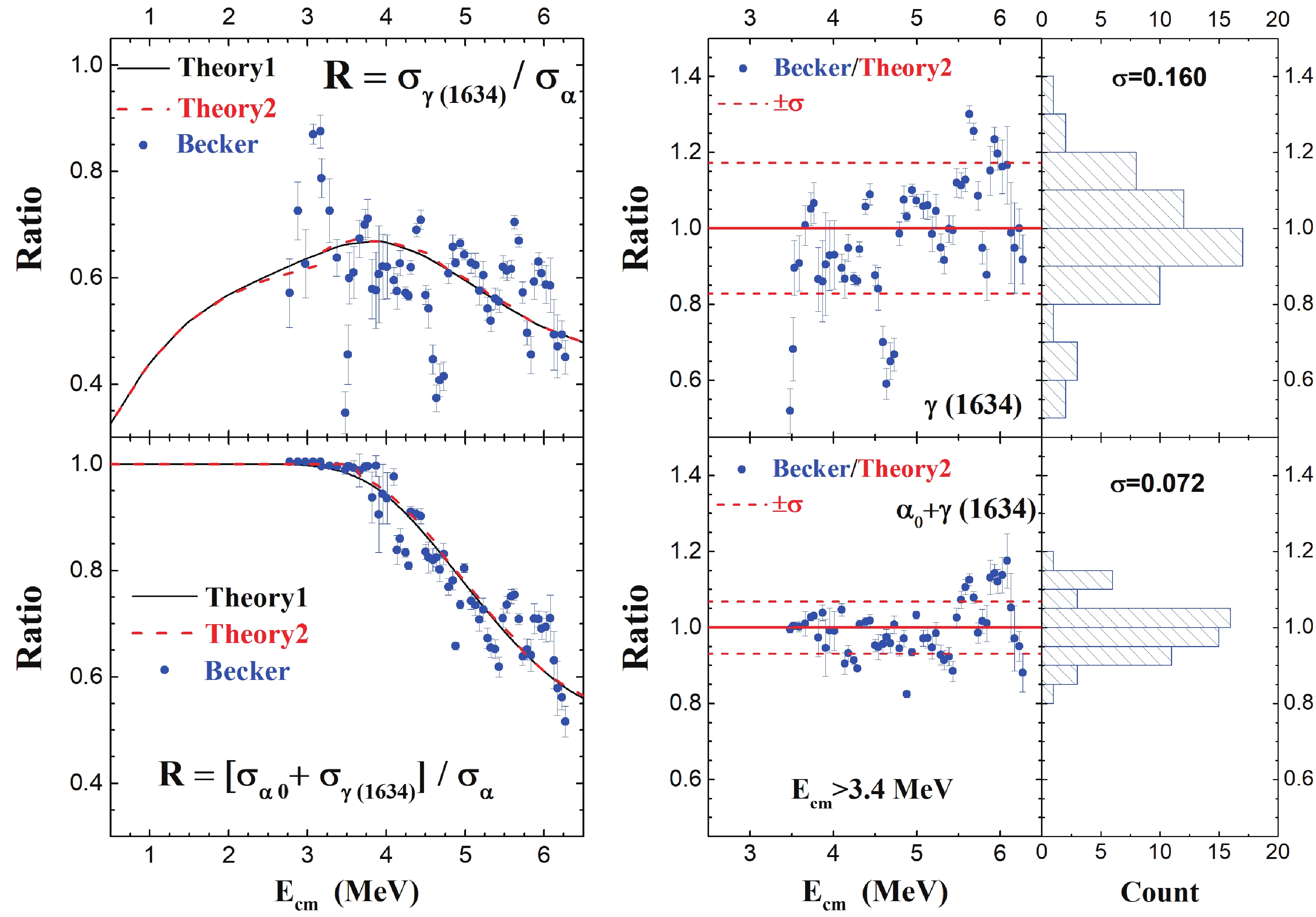 Figure8. (color online) Comparison of branching ratios calculated with experimental data measured by Becker et al. [10] for
Figure8. (color online) Comparison of branching ratios calculated with experimental data measured by Becker et al. [10] for 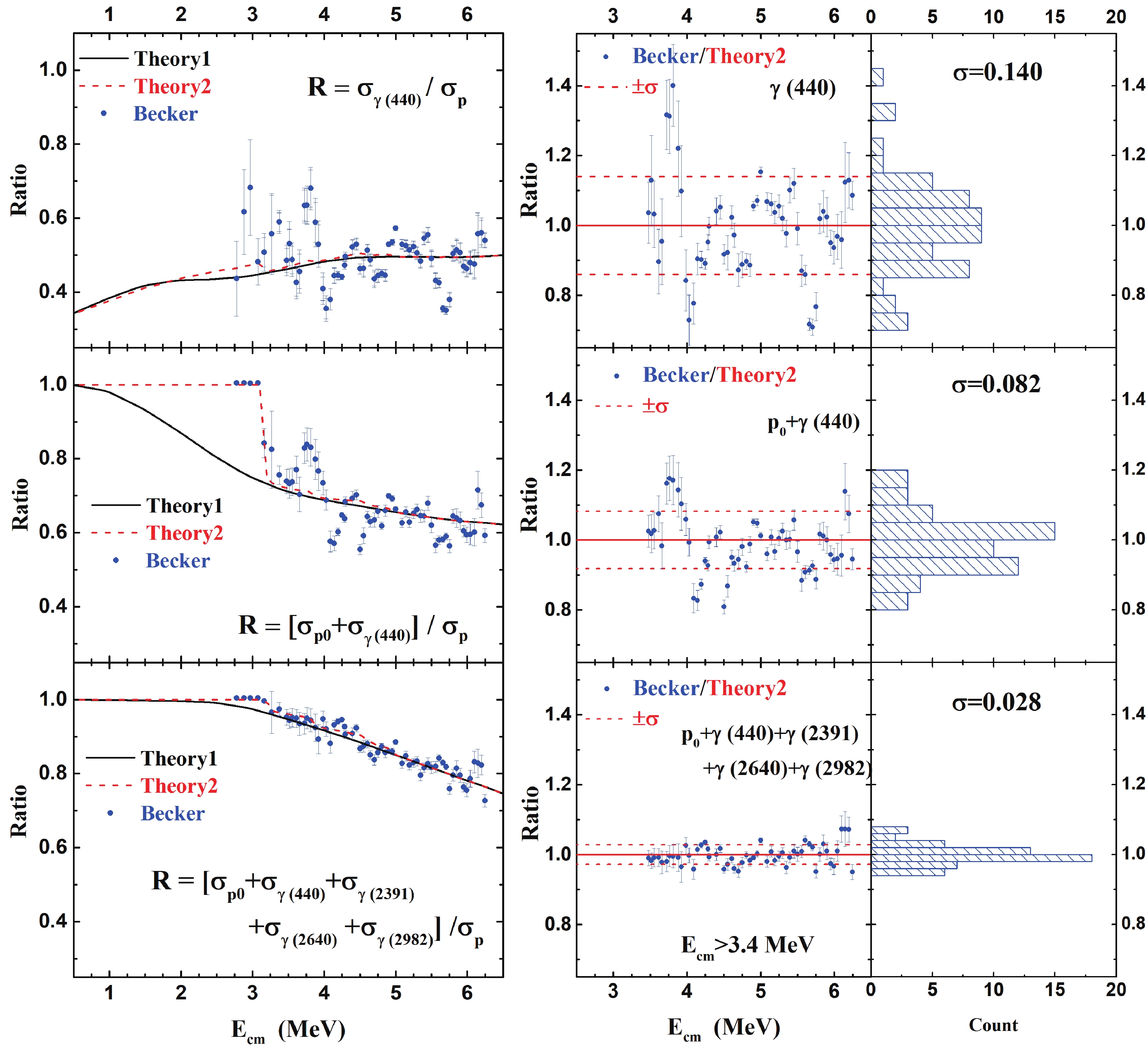 Figure9. (color online) Comparison of branching ratios calculated with experimental data measured by Becker et al. [10] for
Figure9. (color online) Comparison of branching ratios calculated with experimental data measured by Becker et al. [10] for The total p- and
 Figure10. (color online) S* factor of the proton, alpha, and neutron channels and the sum of the three channels after correcting for missing channels.
Figure10. (color online) S* factor of the proton, alpha, and neutron channels and the sum of the three channels after correcting for missing channels.Based on the ground state data from Becker et al. [10] and the calculated ratios for [
Using the data of Kettner et al. [14] as the baseline, the ratios of the S* factors of the proton and alpha channels and the total S* factors are computed for each data set and shown in Fig. 11.
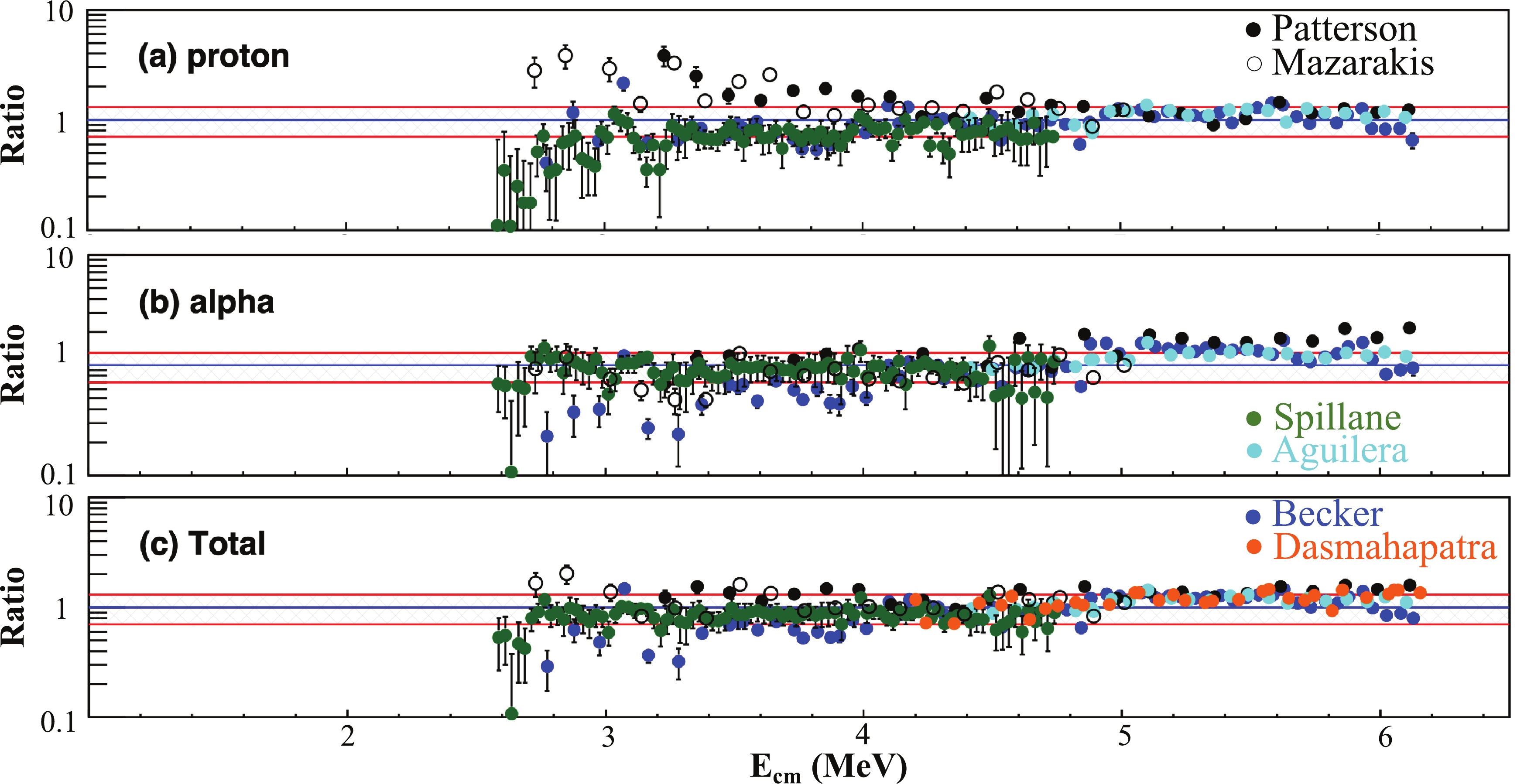 Figure11. (color online) Ratios of various S* factors to baseline S* factors, measured by Kettner et al. after correcting for missing channels. The means and errors of the baseline data sets are interpolated in the calculations of ratios. The shaded areas shown in the ratio plots correspond to ±30% deviations.
Figure11. (color online) Ratios of various S* factors to baseline S* factors, measured by Kettner et al. after correcting for missing channels. The means and errors of the baseline data sets are interpolated in the calculations of ratios. The shaded areas shown in the ratio plots correspond to ±30% deviations.For the proton channel, the S* factors obtained with
For the alpha channel, the situation is better. All data sets seem to match within ±30% deviations with two exceptions. The result of Patterson is higher than other results at energies above 5.6 MeV. This deviation can be explained by considering the 16O+2
For the total S* factors, a reasonable agreement is observed at energies above 4 MeV. The total S* factors obtained in the measurements of Aguilera, Becker, and Patterson mostly match within 20% deviation in the three channels ranging between 4.4 to 6.1 MeV. The measurement using total absorption
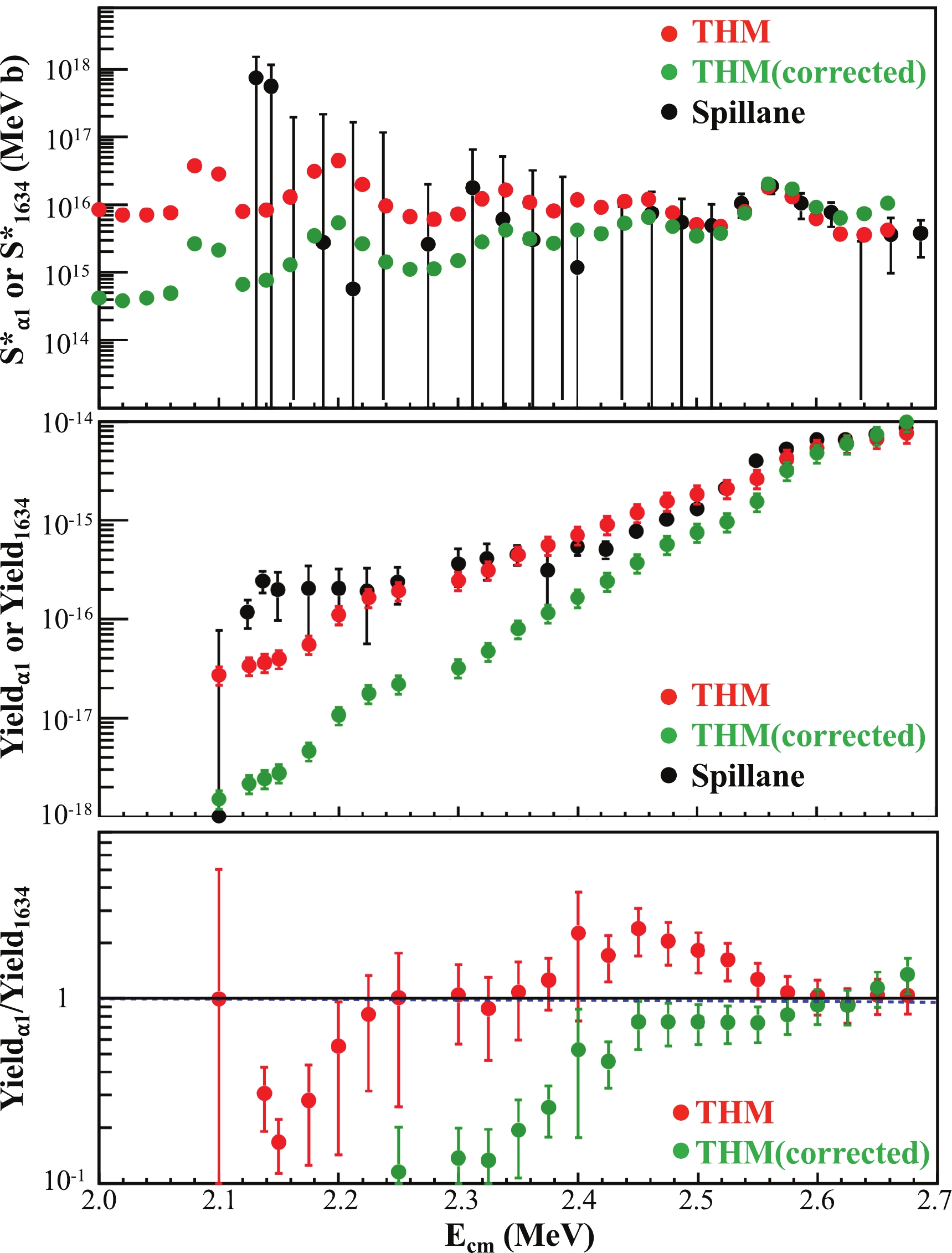 Figure12. (color online) (top) S* factors of
Figure12. (color online) (top) S* factors of The measurements of Becker reported that the ratio of
A comparison of the directly measured S* factor to the two versions of S* factors obtained with the THM is shown in Fig. 12. Although some discrepancies have been observed at energies below 2.7 MeV, the large error bars of the measurement by Spillane prevent us from drawing a clear conclusion. The origin of the large errors comes in part from low statistics and from limitations caused by the background level. Another contribution comes from the differentiation process to obtain the cross section from the measured thick target yield. To avoid this uncertainty, we choose to convert the two versions of the THM S* factors into the thick target yields using the formula in Ref. [5] and compare them with the measured thick target yield of the 1634 keV transition obtained by Spillane et al. The comparison of the thick target yields is shown in Fig. 12.
The ratios of the THM thick target yields to the directly measured thick target yield are also shown at the bottom of Fig. 12. There are two clear disagreements between the S* factors obtained with indirect and direct measurements. The first disagreement is around 2.14 MeV, where a strong resonance was claimed to occur. To date, there has been no precise direct measurement able to confirm the existence of this resonance. Moreover, it is clear that the two THM thick target yields are lower than Spillane's thick target yield, and the strong resonance claimed to occur at 2.14 MeV does not appear in the indirect measurement. Another evident disagreement occurs between 2.4 to 2.6 MeV. The THM result is nearly a factor of two higher than the direct measurement with a reduced
The hindrance model predicts that the 12C+12C S-factor reaches its maximum around
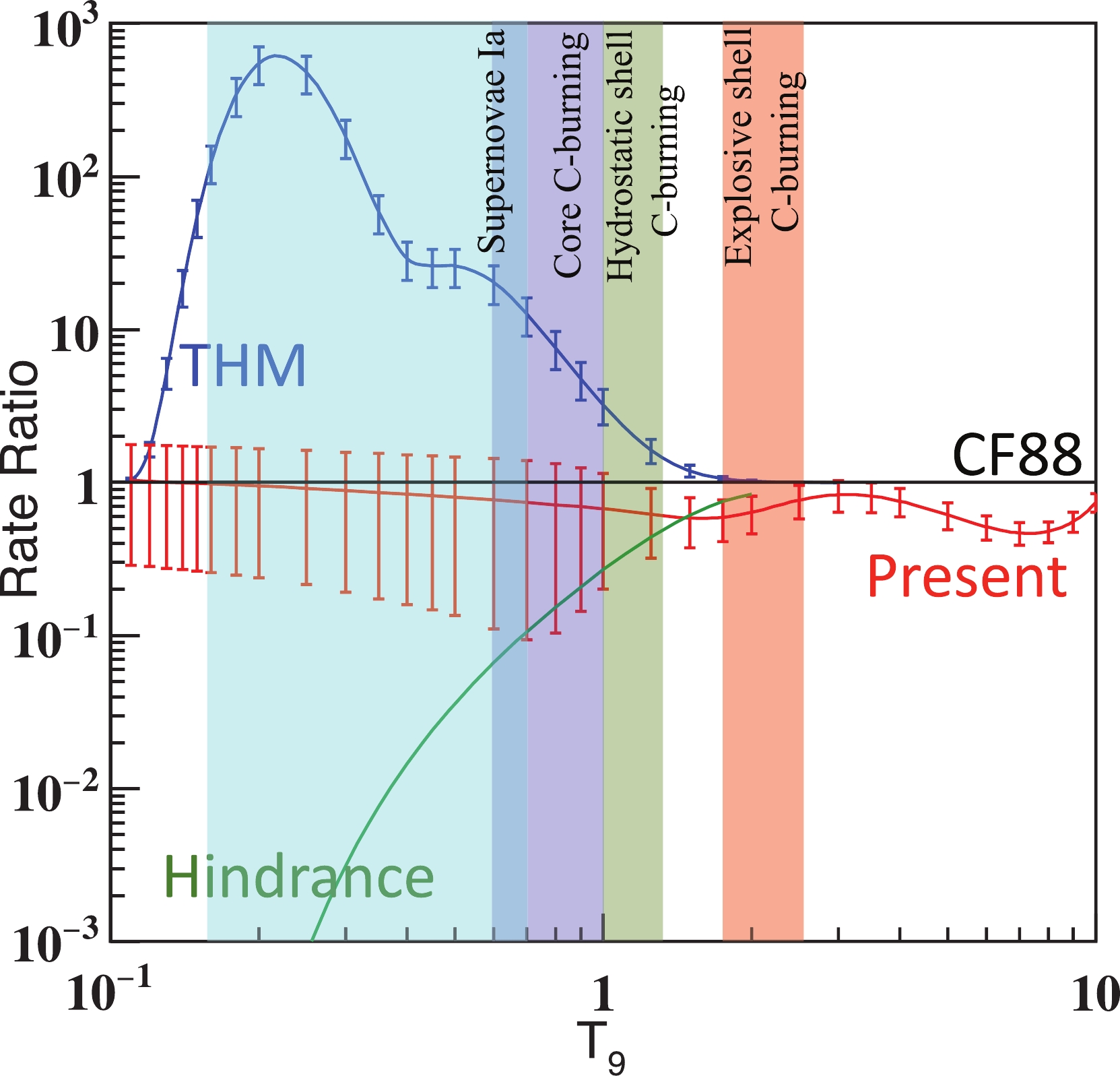 Figure13. (color online) Rates relative to CF88 rate [42] obtained in the present study (red) along with rates based on the THM measurement [35] (blue) and hindrance model [43] (Green). Temperatures for the type Ia supernovae (T = 0.15-0.7 GK), core carbon burning (T = 0.6-1.0 GK), hydrostatic shell carbon burning (T = 1.0-1.2 GK), and explosive shell carbon burning (T = 1.8-2.5 GK) are marked by colored bands.
Figure13. (color online) Rates relative to CF88 rate [42] obtained in the present study (red) along with rates based on the THM measurement [35] (blue) and hindrance model [43] (Green). Temperatures for the type Ia supernovae (T = 0.15-0.7 GK), core carbon burning (T = 0.6-1.0 GK), hydrostatic shell carbon burning (T = 1.0-1.2 GK), and explosive shell carbon burning (T = 1.8-2.5 GK) are marked by colored bands.The strong correlation among the carbon isotope systems provides a great opportunity to establish an upper limit for the 12C+12C S* factor using models constrained by 12C+13C or 13C+13C [5]. Later, this correlation was explained by the ANL group using the large differences of level densities between 12C+12C and other carbon isotope systems [45]. The upper limit obtained with 12C+13C has been reported in Ref. [32]. In the present study, we fit the 13C+13C data using the ESW model. By following the suggestion of Esbensen et al. [43], we scale this original data by a factor of 1.2 in our fitting. The best fit is achieved with the parameters V = –4.01093 MeV, W = 1.02877 MeV, and R = 7.35012 fm. The upper limit of 12C+12C is obtained by scaling R with (12/13)(1/3). The two upper limits are shown in Fig. 10 (d). Although both limits provide a good upper bound for the total S* factor of 12C+12C, there are minor differences between them. The upper limit obtained with 12C+13C is higher than the upper limit obtained with 13C+13C by 30% around
The direct measurement by Spillane et al. [16] reported a strong resonance at 2.14 MeV. Considering the large uncertainty, the direct measurement is higher than the upper limit by only 1.87
The lower limits presented in the present study include an empirical lower limit (KNS) and a theoretical calculation (TWDP) [32]. The current TDWP approach does not include the cluster effect and only provides a baseline for the 12C+12C S* factor at lower energies. It is interesting to note that the TDWP calculation agrees with the empirical lower limit (KNS) with a deviation below 33% at energies below 3 MeV. Combining the new upper limits with the empirical lower limit and the prediction of TDWP, the 12C+12C S* factors are better constrained despite the unknown resonances within the unmeasured energy range.
| T9 | rate/(  | relative uncertainty (1  |
| 0.11 | 7.61E-50 | 72% |
| 0.12 | 1.06E-47 | 72% |
| 0.13 | 8.78E-46 | 73% |
| 0.14 | 4.70E-44 | 73% |
| 0.15 | 1.75E-42 | 73% |
| 0.16 | 4.76E-41 | 74% |
| 0.18 | 1.65E-38 | 74% |
| 0.2 | 2.53E-36 | 75% |
| 0.25 | 5.97E-32 | 77% |
| 0.3 | 1.27E-28 | 78% |
| 0.35 | 5.73E-26 | 80% |
| 0.4 | 8.77E-24 | 81% |
| 0.45 | 6.13E-22 | 82% |
| 0.5 | 2.36E-20 | 83% |
| 0.6 | 9.48E-18 | 86% |
| 0.7 | 1.12E-15 | 87% |
| 0.8 | 5.64E-14 | 85% |
| 0.9 | 1.53E-12 | 79% |
| 1 | 2.60E-11 | 70% |
| 1.25 | 7.17E-09 | 48% |
| 1.5 | 5.07E-07 | 36% |
| 1.75 | 1.56E-05 | 31% |
| 2 | 2.76E-04 | 28% |
| 2.5 | 2.56E-02 | 25% |
| 3 | 7.18E-01 | 23% |
| 3.5 | 8.98E+00 | 22% |
| 4 | 6.47E+01 | 21% |
| 5 | 1.17E+03 | 20% |
| 6 | 8.87E+03 | 18% |
| 7 | 3.99E+04 | 17% |
| 8 | 1.27E+05 | 16% |
| 9 | 3.20E+05 | 15% |
| 10 | 6.79E+05 | 14% |
Table6.Recommended reaction rate for 12C+12C.
To suppress the background, the particle-
Fruet et al. [18] and Tan et al. [19] both measured
Our statistical model calculation based on the data obtained with particle spectroscopy shows that the relative systematic uncertainties of the predicted branching ratios decrease as the branching ratios increase. Although the particle-
The ground state transitions are crucial, as these channels contribute significantly at stellar energies (Fig. 6 and Fig. 7). Novel technologies are required to suppress the backgrounds. As a complement for the particle-
The large uncertainty in the astrophysical reaction rate of 12C+12C is created mainly by the extremely low-trend predicted by the hindrance model [43], which is independent of the resonance structure, and the recent THM result [35], which predicts a very high reaction rate (see Fig. 13). The resonance structure itself makes it difficult experimentally to discern between the various predictions. Our upper and lower limits are established empirically based on the carefully evaluated data obtained by direct measurements. These limits present a novel approach to extrapolate the 12C+12C S* factors down to the important energy region. They significantly reduce the existing uncertainties in the extrapolation. It is important to test these limits with the precise direct measurements to be performed at energies below 2.7 MeV. If there are currently unknown relatively strong resonances, which are fundamentally different from the resonances already confirmed by observing direct measurements at energies above 2.7 MeV, the upper and lower limits presented in the present study must be revised.
X.D. Tang acknowledges Dr. Kettner for providing the original data of his work.


